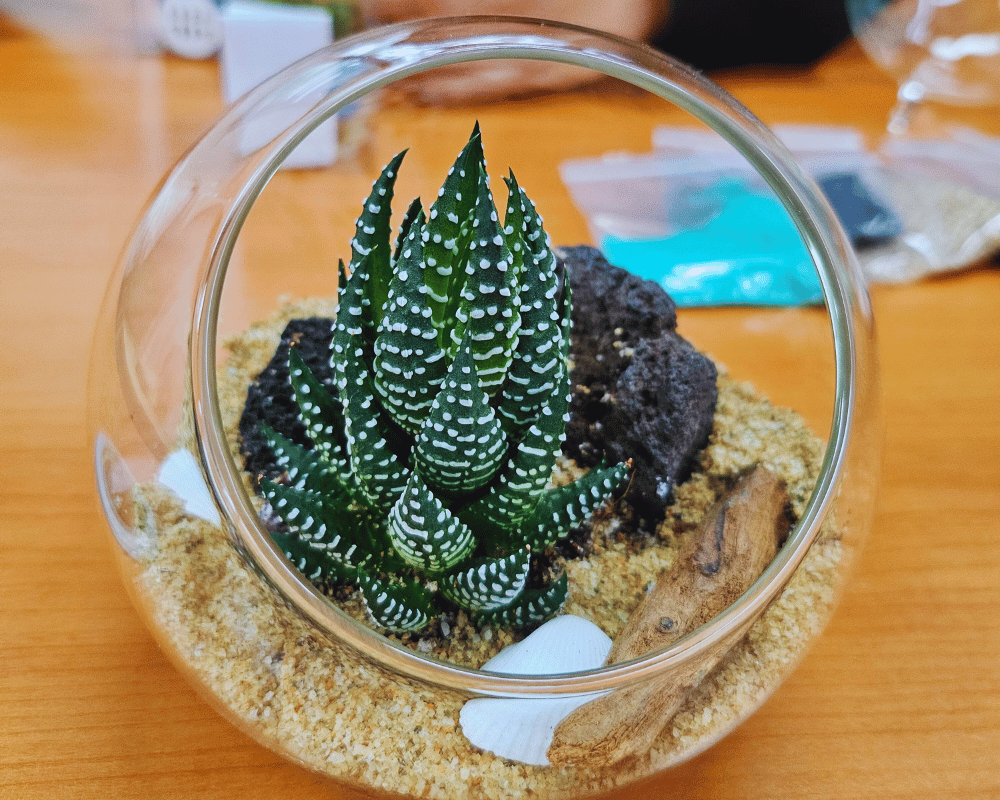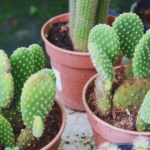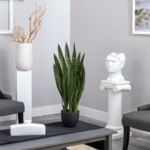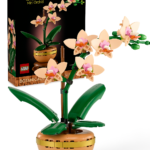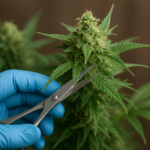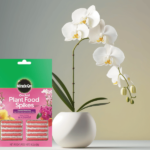Haworthia succulents are compact, easy-to-care-for plants known for their rosette-shaped leaves and captivating patterns. Native to the arid regions of South Africa, these plants have evolved to thrive in challenging conditions, making them a resilient and low-maintenance choice for both novice and experienced plant enthusiasts.
Their unique beauty comes in many forms, from the translucent, bubble-like leaves of Haworthia Cooperi to the bold, striped design of the Zebra Plant (Haworthia Fasciata). These succulents are perfect for small spaces, offering an aesthetic appeal that suits modern interiors, office desks, or cozy window sills.
Not only are they visually striking, but Haworthias also contribute to air purification and bring a calming touch of greenery to your environment. Whether you’re looking to start your gardening journey or expand your succulent collection, Haworthia succulents are an excellent choice that blends beauty with practicality.
What Are Haworthia Succulents?

Haworthia succulents are a diverse group of small, hardy plants belonging to the Asphodelaceae family. Known for their striking, compact rosette shapes and intricate leaf patterns, they’re a favorite among indoor plant enthusiasts. Due to their similar appearance, these succulents are often mistaken for their close relatives, Aloe. However, Haworthias are smaller, less demanding, and perfect for beginners.
With leaves that range from smooth and translucent to ridged or striped, Haworthias add a unique aesthetic to any space. Their slow growth and ability to thrive in containers make them ideal for small apartments, office desks, or windowsills. Additionally, they are non-toxic, making them a safe choice for homes with pets or children.
Origin and Natural Habitat
Haworthia plants originate from South Africa, where they thrive in arid, rocky environments. They are naturally adapted to harsh sunlight and scarce water availability, storing moisture in their fleshy leaves to survive dry spells. In the wild, these succulents often grow under shrubs or rocks, shielding them from direct sunlight and extreme heat. This adaptability has made them a popular choice for indoor cultivation, as they can easily adjust to lower light conditions while maintaining their vibrant appearance.
Types of Haworthia Succulents
Haworthia succulents come in a wide variety of shapes, sizes, and patterns, making them an exciting addition to any plant collection. From the common favorites to rare collector’s pieces, each type has its unique charm. Here’s a look at some popular and distinctive Haworthia varieties:
Common Varieties of Haworthia
Haworthia Cooperi
This variety is famous for its translucent, bubble-like leaves that seem to glow in the sunlight. The leaves form tight rosettes and vary in color from light green to blue-green. It’s a favorite for windowsill displays due to its unique appearance.
Haworthia Fasciata (Zebra Plant)
Known for its bold white horizontal stripes across dark green leaves, this striking variety resembles a zebra’s pattern. Its upright, pointed leaves make it a standout among other succulents.
Haworthia Retusa
Often referred to as the “Star Cactus,” this variety has triangular, translucent-tipped leaves that fan outward. Its unique geometry adds a modern touch to any collection.
Rare and Unique Haworthia Types
Also called “Horse’s Teeth,” this rare variety features flat, rectangular leaves arranged in a unique linear pattern. The tops of the leaves are often translucent, showcasing their intricate vein patterns.
Haworthia Cymbiformis
This plant’s rounded, boat-shaped leaves form compact clusters. Its soft, green appearance makes it a charming and unusual choice.
Haworthia Maughanii
A highly sought-after variety with thick, transparent-tipped leaves that grow in a fascinating, irregular arrangement.
Hybrid Varieties
Haworthias are also popular for hybridization, leading to stunning combinations with unusual leaf patterns, colors, and textures. Collectors prize these hybrids for their unique features and limited availability.
Benefits of Growing Haworthia Succulents

Haworthia succulents are not just visually appealing; they also bring a range of benefits to your indoor and outdoor spaces. Here are some key advantages of cultivating these charming plants:
Low Maintenance
Haworthias thrive with minimal care, making them perfect for beginners. They require infrequent watering and adapt well to indoor lighting conditions.
Compact Size
Their small, neat growth habit makes them ideal for apartments, office desks, or tight spaces where larger plants may not fit.
Air Purification
Like other succulents, Haworthias contribute to improved air quality by releasing oxygen and reducing toxins, especially at night.
Stress Relief
The act of tending to plants, like Haworthias, promotes relaxation and helps reduce stress, adding a calming element to your environment.
Non-Toxic
Haworthias are non-toxic to pets and children, unlike many houseplants, making them a safe option for households.
Aesthetic Appeal
Their unique shapes and patterns add an artistic touch to any decor, blending seamlessly with both modern and traditional styles.
Resilient Nature
Haworthias are highly adaptable and can survive occasional neglect, making them a forgiving choice for busy individuals.
Read Also: The Top 11 Succulents for Bathroom: Bringing Nature Indoors
How to Care for Haworthia Succulents
Caring for Haworthia succulents is simple and rewarding, even for those new to gardening. With the right approach, these hardy plants will thrive and retain their beauty. Here’s a comprehensive guide to ensure your Haworthia stays healthy:
1. Light Requirements
- Optimal Conditions: Place Haworthias in bright, indirect sunlight. They thrive in areas with filtered light, such as near an east- or west-facing window.
- Avoid Direct Sun: Prolonged exposure to direct sunlight can cause sunburn and discoloration.
2. Watering Needs
- Water Sparingly: Allow the soil to dry out completely between waterings. Overwatering can lead to root rot.
- Seasonal Adjustments: Water more frequently during the growing season (spring and summer) and reduce watering in the dormant months (fall and winter).
3. Soil and Potting
- Well-Draining Soil: Use a succulent or cactus mix for proper drainage. You can also add sand or perlite to improve aeration.
- Pots with Drainage Holes: Ensure the pot has drainage holes to prevent water from pooling.
4. Temperature and Humidity
- Ideal Temperatures: Haworthias prefer temperatures between 60–80°F (16–27°C).
- Low Humidity: They thrive in dry environments and do not require high humidity levels.
5. Fertilizing Tips
- Mild Fertilizers: Feed with a diluted succulent fertilizer during the growing season. Avoid fertilizing in winter.
6. Pruning and Maintenance
- Remove Dead Leaves: Trim away any brown or withered leaves to encourage healthy growth.
- Re-potting: Re-pot every 2–3 years or when the plant outgrows its pot, using fresh soil.
7. Pest Management
- Common Pests: Watch for mealybugs or spider mites. Use a gentle insecticidal soap or neem oil if infestations occur.
8. Propagation
- Offsets: Haworthias produce small offsets or pups. Gently separate and replant them to propagate your plant collection.
Propagation Techniques for Haworthia Succulents
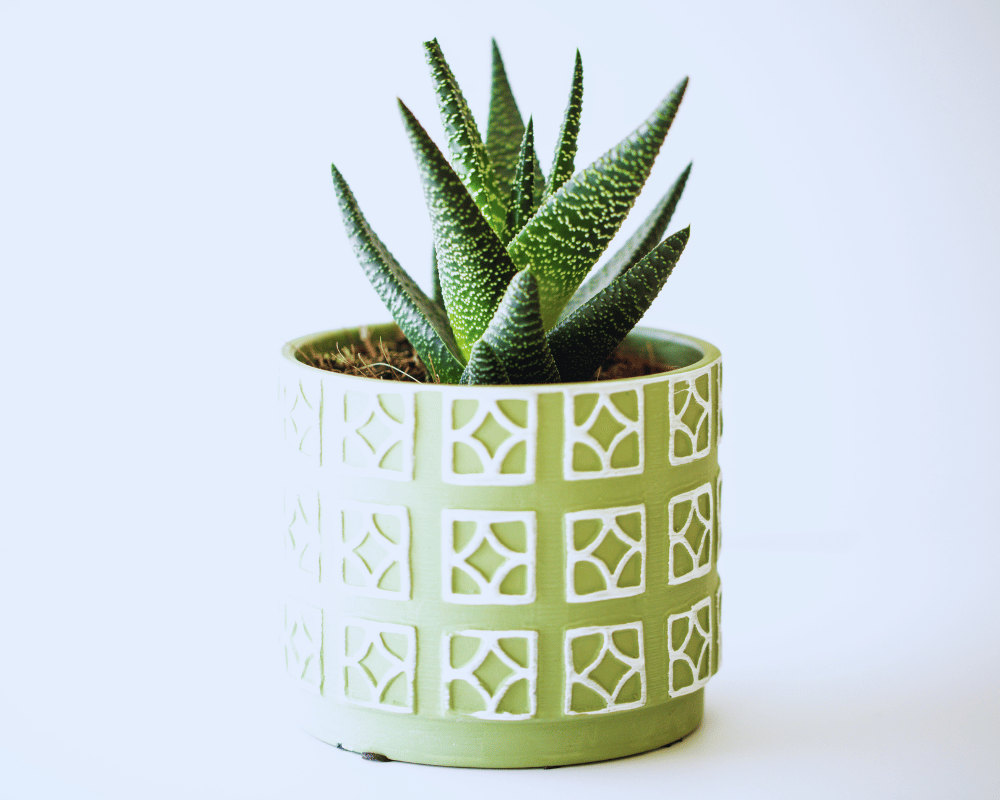
Propagating Haworthia succulents is a simple and satisfying process that allows you to expand your plant collection or share your beautiful plants with others. There are two main propagation methods for Haworthia: using offsets (pups) and leaf cuttings. Here’s how you can successfully propagate your Haworthia:
1. Propagating Through Offsets (Pups)
One of the most common and easiest ways to propagate Haworthia is by using offsets, or “pups,” which are small plantlets that grow around the base of the mother plant.
- Step 1: Identify Pups
Look for small pups growing at the base of the parent plant. These usually appear as tiny rosettes, often resembling miniature versions of the parent. - Step 2: Gently Remove the Pup
Carefully remove the pup by gently pulling it away from the main plant or cutting it with a sterilized knife or scissors. Make sure it has some roots attached if possible. - Step 3: Allow to Callus
Let the pup sit in a dry place for a few days so the cut area can callus over. This helps prevent rot when planted. - Step 4: Plant the Pup
Once the pup has callused, plant it in a small pot with well-draining succulent or cactus soil. Water lightly, keeping the soil dry until the roots establish.
2. Propagating Through Leaf Cuttings
While less common, Haworthias can also be propagated from leaf cuttings. However, success with this method is more challenging compared to using pups.
- Step 1: Select a Healthy Leaf
Choose a healthy, mature leaf from the parent plant. It should be free of damage or disease. - Step 2: Cut the Leaf
Using a sterilized, sharp knife, cut the leaf as close to the base as possible. - Step 3: Let the Leaf Dry
Allow the cut leaf to dry and callus for a few days. This reduces the risk of fungal infections. - Step 4: Place the Leaf on Soil
Lay the callused leaf flat on top of well-draining succulent soil. Do not bury the leaf in the soil; it should simply rest on top. - Step 5: Mist and Wait
Lightly mist the cutting to keep it hydrated but avoid soaking. Over time, small pups will form around the base of the leaf. Once these pups grow strong roots, they can be planted separately.
3. Tips for Successful Propagation
- Use Sterilized Tools: To prevent contamination and disease, always sterilize your cutting tools with rubbing alcohol before use.
- Proper Soil: Use well-draining soil to prevent excess moisture, which could lead to rot.
- Patience: Haworthia propagation, especially through leaf cuttings, can take time. Be patient and avoid overwatering.
Common Problems and Solutions
While Haworthia succulents are generally low-maintenance, they can still face a few challenges that may affect their growth and health. Here are some of the most common problems you may encounter, along with practical solutions to resolve them:
1. Overwatering and Root Rot
Problem: One of the most common issues with Haworthia is overwatering, which leads to root rot. Since Haworthias are drought-tolerant, they don’t require frequent watering. Overwatering causes the roots to become soggy and may result in yellowing or mushy leaves.
Solution:
- Check the soil: Always allow the soil to dry out completely before watering. A well-draining potting mix is crucial for preventing water retention.
- Water sparingly: Water only when the soil is completely dry to the touch, especially in cooler months.
- Ensure proper drainage: Make sure your pot has drainage holes to allow excess water to escape.
2. Sunburn or Leaf Discoloration
Problem: If your Haworthia is exposed to direct sunlight for extended periods, it may develop sunburn, which shows up as browning or fading of the leaves. Haworthias prefer indirect light, and too much direct sun can scorch them.
Solution:
- Move to a shaded spot: Place your Haworthia in a location where it gets bright, indirect light. A windowsill with sheer curtains or near a light-diffusing window is ideal.
- Adjust the exposure: Gradually acclimate your plant to more sunlight if you want to move it to a sunnier location.
3. Etiolation (Stretched Out Growth)
Problem: Haworthia succulents may experience etiolation, where they grow tall and stretched out with sparse leaves. This happens when the plant doesn’t receive enough light and begins to reach for more sunlight.
Solution:
- Increase light exposure: Move the plant to a brighter area where it can receive indirect sunlight for most of the day.
- Rotate the plant: Regularly rotate your Haworthia to ensure even light distribution and prevent it from leaning toward a single light source.
4. Yellowing Leaves
Problem: Yellowing leaves can be a sign of several issues, including overwatering, nutrient deficiency, or pest infestation. The leaves may also yellow as part of the plant’s natural aging process.
Solution:
- Check watering habits: Ensure you’re not overwatering, as this is the most common cause of yellow leaves.
- Inspect for pests: Check for mealybugs or aphids, which could be sucking the sap from the leaves. Use insecticidal soap or neem oil to treat infestations.
- Provide nutrients: If the soil lacks essential nutrients, apply a balanced fertilizer diluted to half strength during the growing season.
5. Pests and Insects
Problem: Like many plants, Haworthia succulents can attract pests, such as mealybugs, aphids, or spider mites. These pests can damage the plant by feeding on its sap.
Solution:
- Regular inspection: Routinely check the undersides of leaves and around the base for pests.
- Manual removal: For minor infestations, wipe the leaves with a damp cloth to remove pests.
- Use natural pesticides: If the infestation is more severe, use a gentle insecticidal soap or neem oil to treat the plant.
6. Drooping Leaves
Problem: Drooping leaves can indicate that your Haworthia is stressed, usually due to improper watering or environmental factors.
Solution:
- Watering adjustment: Ensure you’re not overwatering or underwatering. The soil should be allowed to dry completely between waterings.
- Environmental factors: Haworthias are sensitive to temperature changes. Avoid placing them near drafts or heaters that could stress the plant.
7. Leggy Growth
Problem: Haworthia may become leggy (long, thin, and spaced-out growth) if it doesn’t receive enough light or if it’s kept in a too-humid environment.
Solution:
- Increase sunlight exposure: Move the plant to a brighter spot with indirect sunlight. You can also use grow lights if natural light is insufficient.
- Control humidity: Ensure that your Haworthia is in a dry, well-ventilated area. High humidity can encourage leggy growth.
8. Soil Issues (Compaction and Poor Drainage)
Problem: Using heavy, compact soil can cause poor drainage and hinder the plant’s growth. Over time, the soil may become too dense, preventing water from draining properly and leading to root rot.
Solution:
- Repot with fresh soil: If you suspect soil issues, repot your Haworthia into fresh, well-draining cactus or succulent soil. You can also add sand or perlite to improve aeration and drainage.
- Check soil texture regularly: Make sure the soil remains light and loose, which is essential for healthy root development.
9. Too Cold Temperatures
Problem: Haworthias are sensitive to cold temperatures. If exposed to temperatures below 50°F (10°C), they may stop growing, develop discoloration, or suffer from frost damage.
Solution:
- Keep in a warm spot: Ensure your Haworthia is kept in a warm, indoor space with temperatures between 60–80°F (16–27°C).
- Protect from drafts: Avoid placing the plant near cold windows or in areas with temperature fluctuations.
Are Haworthia plants toxic to pets?
No, Haworthia plants are not toxic to pets. These succulents are considered safe for cats, dogs, and other animals. Unlike some other plants that can cause harm if ingested, Haworthias do not contain harmful substances that pose a risk to your pets. However, while they are non-toxic, it’s still a good idea to keep plants out of reach of curious pets, as chewing on plants can sometimes cause stomach upset or discomfort. If your pet does show signs of digestive issues after nibbling on a Haworthia, it’s always best to consult a veterinarian.
Conclusion
Haworthia succulents are not only beautiful and low-maintenance plants, but they also provide many benefits for your home or office decor. With their unique, rosette-shaped leaves and ability to thrive in minimal care conditions, these plants are ideal for both novice gardeners and seasoned plant enthusiasts. Whether you’re decorating your desk, creating a cozy indoor garden, or adding a touch of greenery to your bathroom, Haworthia can fit seamlessly into any space. Plus, with their non-toxic nature, they are safe for pets, making them a great addition to homes with animals. By following simple care guidelines and choosing the right propagation techniques, you can enjoy these charming plants for years to come.
Frequently Asked Questions (FAQs)
1. How often should I water my Haworthia plant?
Haworthias prefer to be watered infrequently. Water them only when the soil is completely dry, usually every two to three weeks. Overwatering can lead to root rot, so ensure the pot has proper drainage.
2. Can I keep a Haworthia plant in direct sunlight?
While Haworthia plants enjoy bright light, they should be kept out of direct sunlight for long periods as it can cause their leaves to burn. A spot with indirect light is ideal.
3. How do I propagate Haworthia?
Haworthia can be propagated by offsets (pups) or leaf cuttings. Gently remove the offsets and plant them in fresh soil, or cut a healthy leaf, let it callus over, and then plant it in well-draining soil.
4. Is Haworthia a good plant for beginners?
Yes! Haworthia is an excellent choice for beginners due to its low maintenance requirements. It can thrive in various conditions and doesn’t require frequent watering or special care.
5. What size pot should I use for my Haworthia plant?
Haworthias are small succulents and don’t need a large pot. Choose a pot that is just slightly bigger than the root system, ensuring it has good drainage to prevent water from accumulating in the soil.

